Icons of Gävle
Rolf Carl Werner – A true graffiti pioneer
Rolf Carl Werner, a first wave graffiti artist and a living legend in Gävle. With an undying love for underground movements, RCW has been involved in everything from raves in the early 90s to arranging graffiti shows in museums. As he also has received the Olof Högberg plaque for eminent cultural achievement, you can easily say that Rolf has made an impact on many levels of the society. And we love it!

F: You are an eighties pioneer in graffiti, so you were a part of the very first wave in Sweden. How did this happen? What was the catalysator that made you dedicate your life to this art form?
RCW: Hip Hop is celebrating 50 this year and I think that it is important to mention. The commercial conception in Sweden is that it started with Sugar Hill Gang in the eighties, when it was pioneers like Kool Herc that started everything in the beginning of the seventies. So, as a young kid in 1981, when I in Sandviken saw a news report about Hip Hop and breaking, it stuck in my mind. And when I 3 years later saw parts of a documentary about the scene in New York called Style Wars, I was totally hooked. Sadly, I wasn’t allowed to watch the whole thing cause Dallas started on the other channel halfway in.
F: Hahaha, there is something both tragic and nostalgic about the time when the households in Sweden only had two channels and Dallas dictated peoples Friday nights.
F: Did you start painting directly after this?
RCW: Actually, I bought in to the whole package. I did everything that was connected with the hip hop culture. I started to breakdance and there are also some really old recordings of me rapping on reel to reel tape. But as I already had a talent for scetching, it gradually became clear for me that I should focus on grafitti.
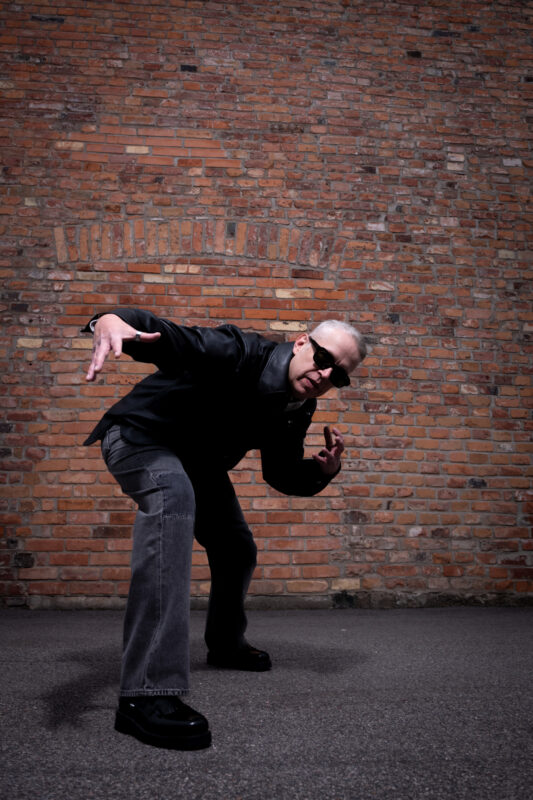
Denim: Our Legacy, Shoes: Our Legacy, Shirt: Samsoe Samsoe, Faux leather shirt: Séfr, Shades: A.Kjaerbede
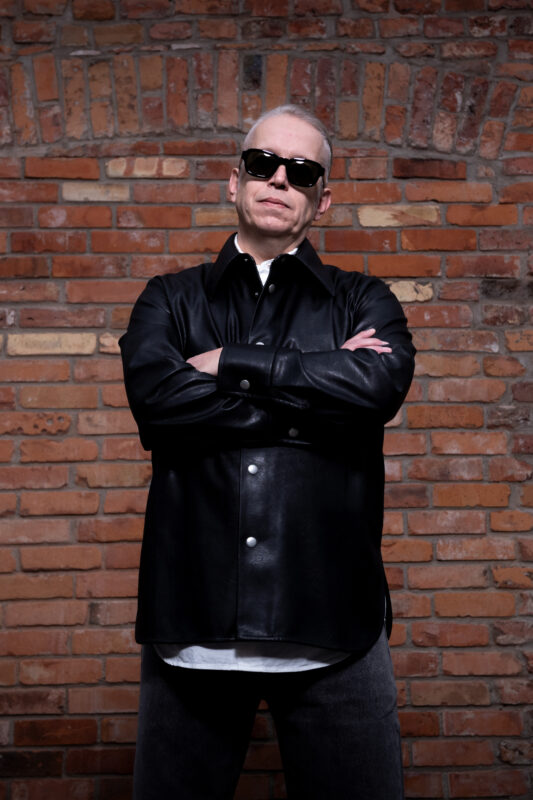
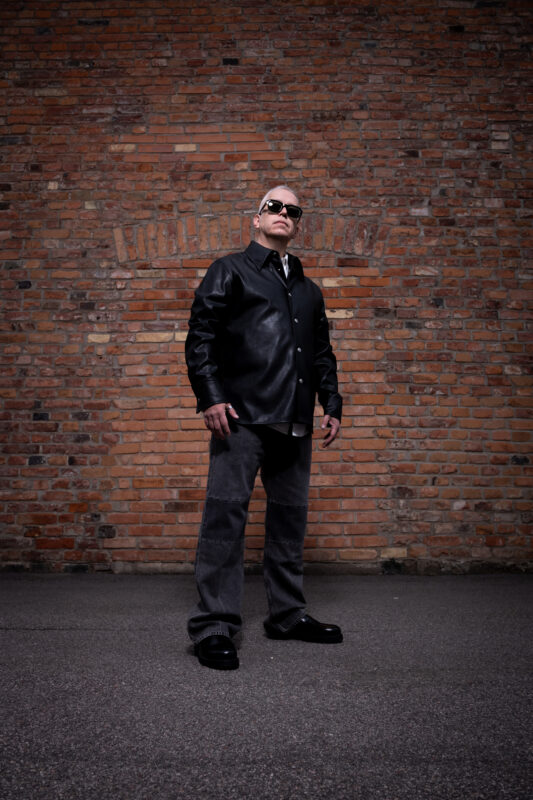
Many crews stole their cans
F: So, as a grafitti pioneer in the middle of the eighties. Was it easy to get spray cans?
RCW: No. It was really hard to find good nuances and extremely expensive. So, many crews either stole the cans or asked to be paid in spray cans when they did work for example a school or other public places. Because this was before all the criticisms about graffiti being seen as vandalism. So, the public sector looked at it as fresh and exciting. I was fortunate to have a natural talent and was hired to do paintings on several places. I still think that one of them is still visible at Björksätra school in Sandviken.
F: Would we recognize these early paintings as yours?
RCW: In some ways I think you would. I was already then getting inspiration from nature and man made machines and I still am today. I think you can’t beat nature when it comes to design, just get inspired by its core. Probably you can also notice my style through the coloring.
F: Yes, because your style is very unique; you combine art and graffiti in a way so that the observer immediately understands that it’s your piece. How did you develop your style?
RCW: My style has been with me from the beginning. I have always had the luxury or the curse(it depends on how you see it), of seeing pictures and ideas in my head and been able to put them on walls or canvas. Though, I have studied both at Gävle art school and Konstfack in Stockholm. My style was already set when I studied there but the teachers gave me confidence to trust my inner talent and dare to express it fully in paintings. Because as all Swedes now, we live in a society that it’s strongly affected by the law of Jante. So, to have experienced artists as teachers, who told me to trust my talent was extremely valuable.
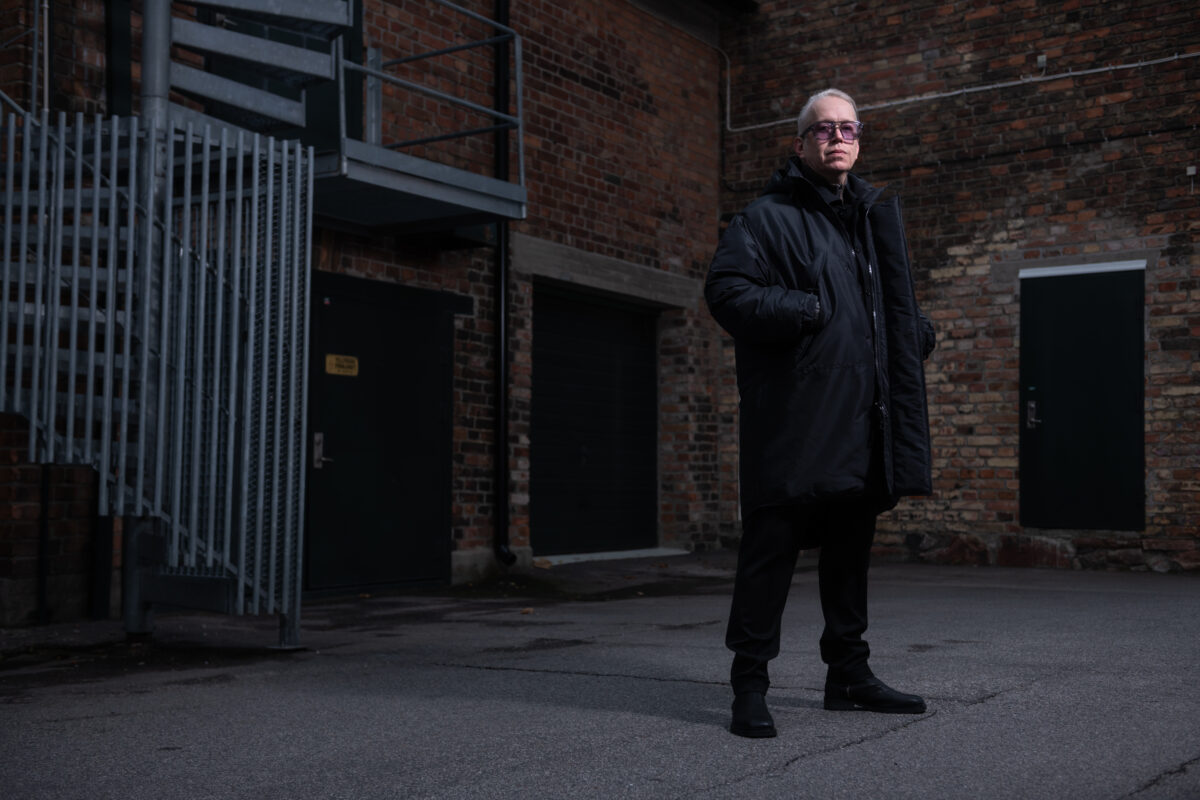
Parka: Our Legacy, Shoes: Our Legacy, Casual suit: Filippa K, Roll-neck: Samsoe Samsoe
It’s hard for many people to get connected with art
F: We can see that you have made several big artworks for sport arenas, for example PEK hockey arena in Tierp, Gavlehov in Gävle and for the cross-country world championship in Falun. Is there a connection between sports and grafitti?
CRW: I think that I’m the connection because I really like sports. And besides me liking sports, I want to show my art where the people are. My opinion is that too many of the cultural establishments are still institutionalized and therefor it’s hard for many people to get connected with art. The threshold is too high and not enough including in the cultural sector. I sincerely believe that Gävle art center should be moved to the biggest shopping mall in the city. And this belief made me approach a project like Öster in Gävle in a certain way.
F: Ahh, the project for Öster in Gävle. You are the creator behind the beautiful murals that are made on seven houses in a troublesome neighbourhood in Gävle. How did you get the assignment? And how did you approach it? Because it feels like an important mission.
RCW: Yes, I am the artist behind the murals, and I got selected from a jury and representatives from Öster inhabitants. Several artists pitched their ideas and against all odds my idea was the one they choose. This was a total surprise for me because street art wasn’t big at this time. But they liked my idea of giving the inhabitants something big and welcoming to be proud of, instead of making a small monument in the park. As I’m raised in an area like Öster I knew that the people living there are the instruments to make it a better place. So, I wanted to include Östers inhabitants in my paintings.
Before I start a project, I always go to the spot to get a feeling of the vibe and to get inspiration, as did I also this time. I went to Öster with my camera and started to take photos of the surroundings. And at the first session I came across several fantastic people that allowed me to take a picture of them. With their warmth and positive energy, they gave me a clear vision what I should do. The people that I met that first day in Öster and the pictures I took of them became the spine of the whole project.
F: Poetic 🙂
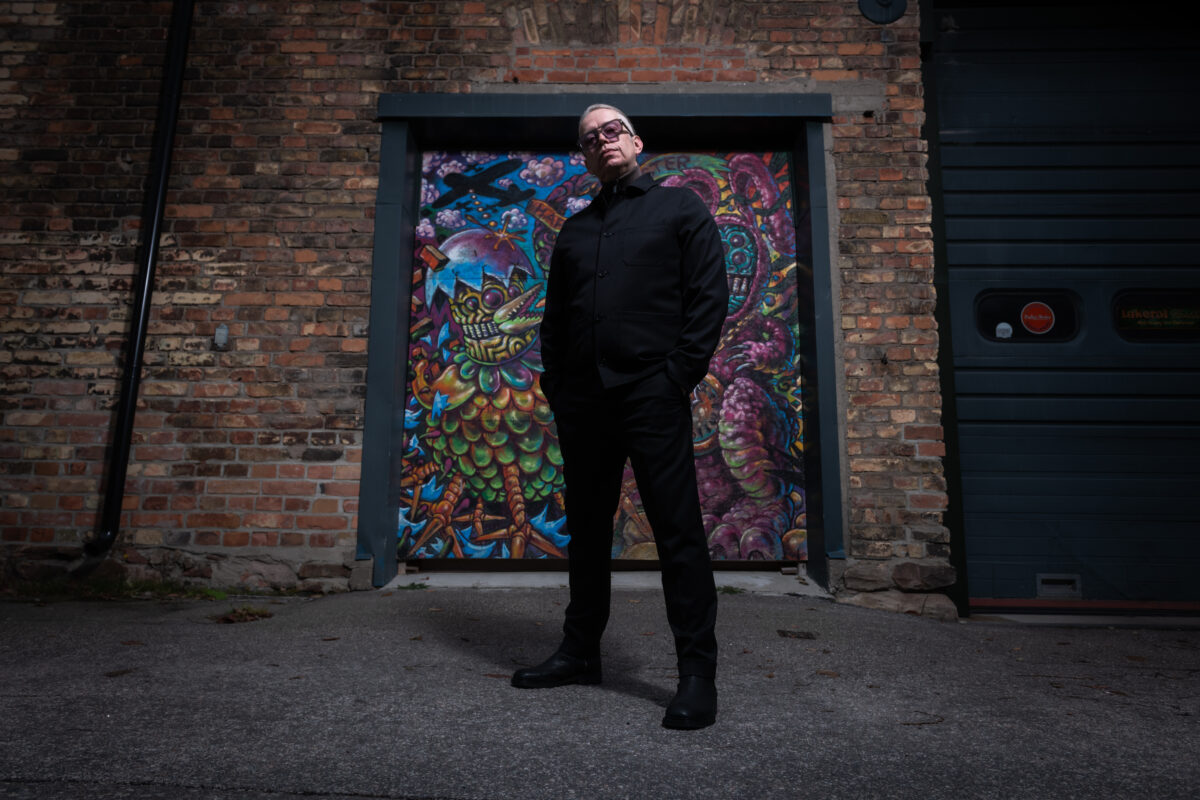
Casual suit: Filippa K, Roll-neck: Samsoe Samsoe, Shades: A.Kjaerbede, Shoes: Our Legacy
Senior citizens ranting like Ultras
F: As we are talking about projects; you were also one of ten selected artist to paint Kolingsborg Slussen in Stockholm before they teared it down and you were also invited to Spring Remake Snösätra amongst only the biggest names in the scene. How does it feel when some of the greatest grafitti artist come together to make magic happen. Do you feel inspired or do you get competitive?
RCW: I get excited and inspired of the environment and I have always found it interesting to see others go all-in with their thing. I don’t see the other artist as competitors but I can get performance anxiety. I sharpen my senses and try to keep up with the others tempo. It’s almost like it’s game time. It’s not like that I’m facing opponents, more like that I need to step up for my team mates and the scene. Doing these big “shows” are amazing due to the audience. People with all kind of different backgrounds come to watch us paint, as the places are so open and there are no boundaries. So you reach an incredible broad audience and you get so much positive feedback.
But sometimes you also meet some other opinions. As we did when we painted Kolingsborg. When I and Karolina Falkholtz painted the first lines on the building, 20 senior citizens were standing behind us screaming and cursing. So when the Swedish Television interviewed me, I told them that it was inspiring to paint this historical building but it felt really weird to have senior citizens ranting at you like ultras at a football game. They protested against the whole Slussen project and we got in their way.
I’m painting for survival
F: What would make your life easier as an artist?
RCW: As I’m a fulltime artist, I’m painting for survival. But I don’t paint to sell and make money, I must paint to not go crazy. I got to get the images in my head out on canvas. Even if I’m starving, I continue to paint. Though, as we are living in a world that’s all about money, I need to sell. So, in a perfect world, I would have an assistant or an agent that took care of all sales, marketing, social media, bookings, etc. Because if I don’t have to approach these subjects, my life as an artist surely would be easier and more creative.
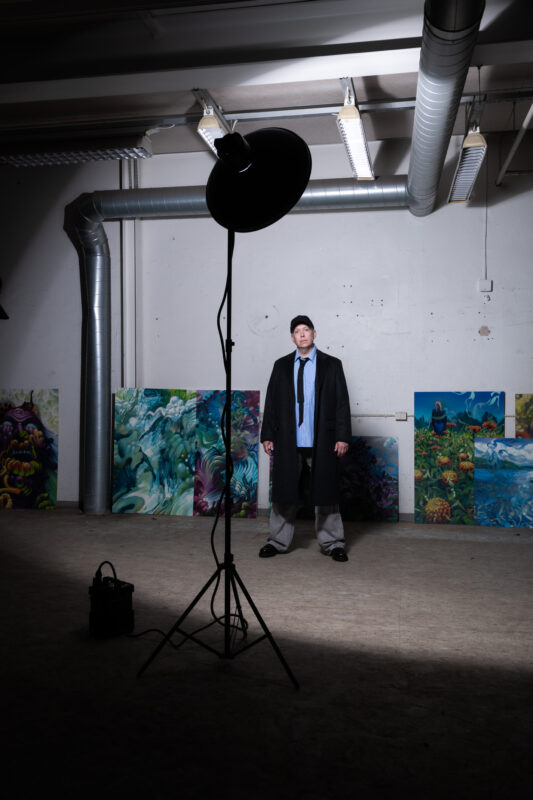
Denim: Hope, Coat: Filippa K, Shirt: Sunflower, Cap: Acne Studios, Shoes: Our Legacy, Tie: Tiger of Sweden
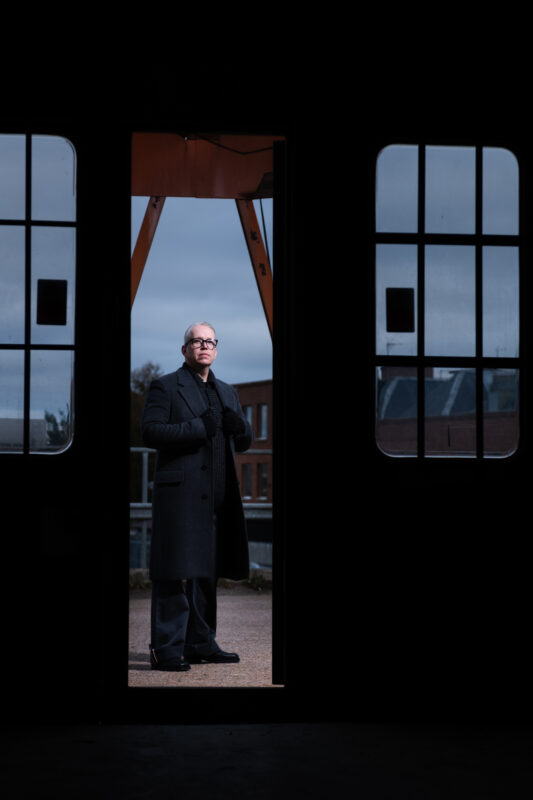
Denim: Acne Studios, Coat: Our Legacy, Sweater: Our Legacy, Shoes: Our Legacy, Gloves: Tiger of Sweden
Art exhibitions should be valued as concerts
F: Are you planning any new exhibitions and how much work is it to do a show?
R: For 2024 I have together with Fico planned to do an exhibition in the store that runs for a whole year. It is a type of show that I have wanted to do for a very long time. To shape an exhibition for 1 year were you change the paintings every month. So the exhibition will change in total 12 times. The look of the paintings will change accordingly to the seasons, so they will sort of follow the fashion changing in the store. To do a show in a store like Fico is exciting for me as I will bring the art to the people instead of people have to visit certain establishments to see art. It has always been a natural goal for me, as an artist from the street, to put art where you don’t expect to see it. To be visible at public places where many people are in movement.
When you do some shows, it can take months even years to put together. You try to get your message out in the right way and to give the visitors a great overall experience. It’s very similar to a concert or a theater show. And I think, even though I’m very much for making it easier for people to connect ot art, that artist sometimes should be able to charge an entrance fee. Because the only income artists gets from putting up an exhibition is when they sell a piece. So if you don’t sell anything, you have been working for free for a very long time. And it’s hard to make a living out of nothing.
Maybe we will try to charge people a fee when me and the British street artist Sweet Toof will co-operate to do a show again . We did a successful exhibition in London a couple of years back and are planning to one again in Stockholm or London soon.
F: Nice. We are so much looking forward to the exhibition at Fico and are eager to see a possible future co-operation between you and Sweet Toof.